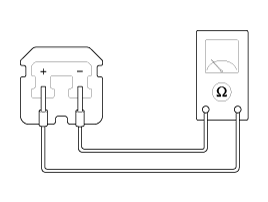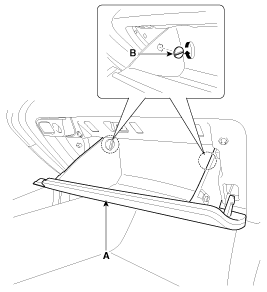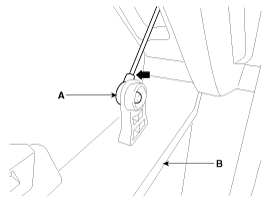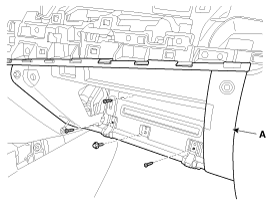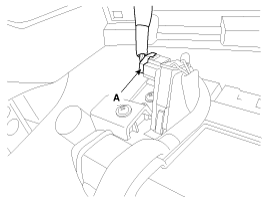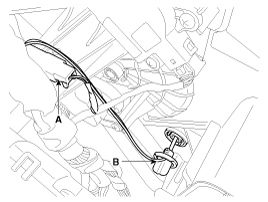 Hyundai Equus: Evaporator Temperature Sensor Repair procedures
Second generation VI (2009Ц2024) / Hyundai Equus VI 2009-2024 Service Manual / Heating, Ventilation and Air Conditioning / Air Conditioning System / Evaporator Temperature Sensor Repair procedures
Hyundai Equus: Evaporator Temperature Sensor Repair procedures
Second generation VI (2009Ц2024) / Hyundai Equus VI 2009-2024 Service Manual / Heating, Ventilation and Air Conditioning / Air Conditioning System / Evaporator Temperature Sensor Repair procedures
Second generation VI (2009Ц2024) / Hyundai Equus VI 2009-2024 Service Manual / Heating, Ventilation and Air Conditioning / Air Conditioning System / Evaporator Temperature Sensor Repair procedures
| Inspection |
| 1. |
Turn the ignition switch OFF. |
| 2. |
Disconnect the evaporator temperature sensor connector. |
| 3. |
Measure the resistance between terminal У+Ф and У-Ф of the evaporator temperature sensor.
Specification
|
| 4. |
Connect the evaporator temperature sensor connector. |
| 5. |
Run the engine and turn the A/C switch ON, then measure the voltage between the terminals of the harness connector. |
| Replacement |
| 1. |
Disconnect the negative (-) battery terminal. |
| 2. |
Remove the cowl side trim.
(Refer to Body - "Cowl Side Trim") |
| 3. |
Remove the crash pad under cover (A) by pressing the locking pin.
|
| 4. |
Disconnect the under lamp connector (A).
|
| 5. |
Remove the stopper (B) from the glove box (A).
|
| 6. |
Disconnect the air damper (A) from the glove box (B).
|
| 7. |
Remove the glove box housing (A) after loosening the mounting screws and nuts.
|
| 8. |
Disconnect the glove box lamp connector (A).
|
| 9. |
Disconnect the evaporator temperature sensor connector (A),
and then remove the evaporator temperature sensor (B) by pulling it out
after rotating it 90∞ in a counterclockwise direction.
|
| 10. |
Install in the reverse order of removal. |
 Evaporator Temperature Sensor Description and Operation
Evaporator Temperature Sensor Description and Operation
Description
The evaporator temperature sensor will detect the evaporator
core temperature and interrupt compressor relay power in order to
prevent evaporator from freezing by excessive cooling. ...
 In-car Sensor Description and Operation
In-car Sensor Description and Operation
Description
An in-car air temperature sensor is located in the heater control.
The sensor contains a thermistor which measures the
temperature of the cabin. The signal determined by the resistan ...
See also:
Starter Description and Operation
Description
The starting system includes the battery, starter, solenoid
switch, ignition switch, inhibitor switch (A/T), clutch pedal switch
(M/T), ignition lock switch, connection wires and th ...
Carry emergency equipment
Depending on the severity of the weather where you drive your car, you should
carry appropriate emergency equipment. Some of the items you may want to carry include
tire chains, tow straps or chai ...
Electronic stability control (ESC)
The Electronic Stability control (ESC) system is designed to stabilize the vehicle
during cornering maneuvers. ESC checks where you are steering and where the vehicle
is actually going. ESC ap ...
Categories
Hyundai Equus Manuals
© 2011-2024 Copyright www.heqmanual.com

